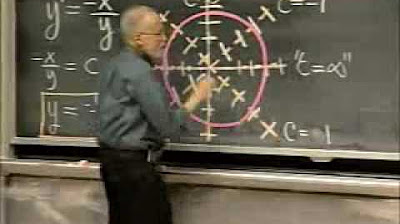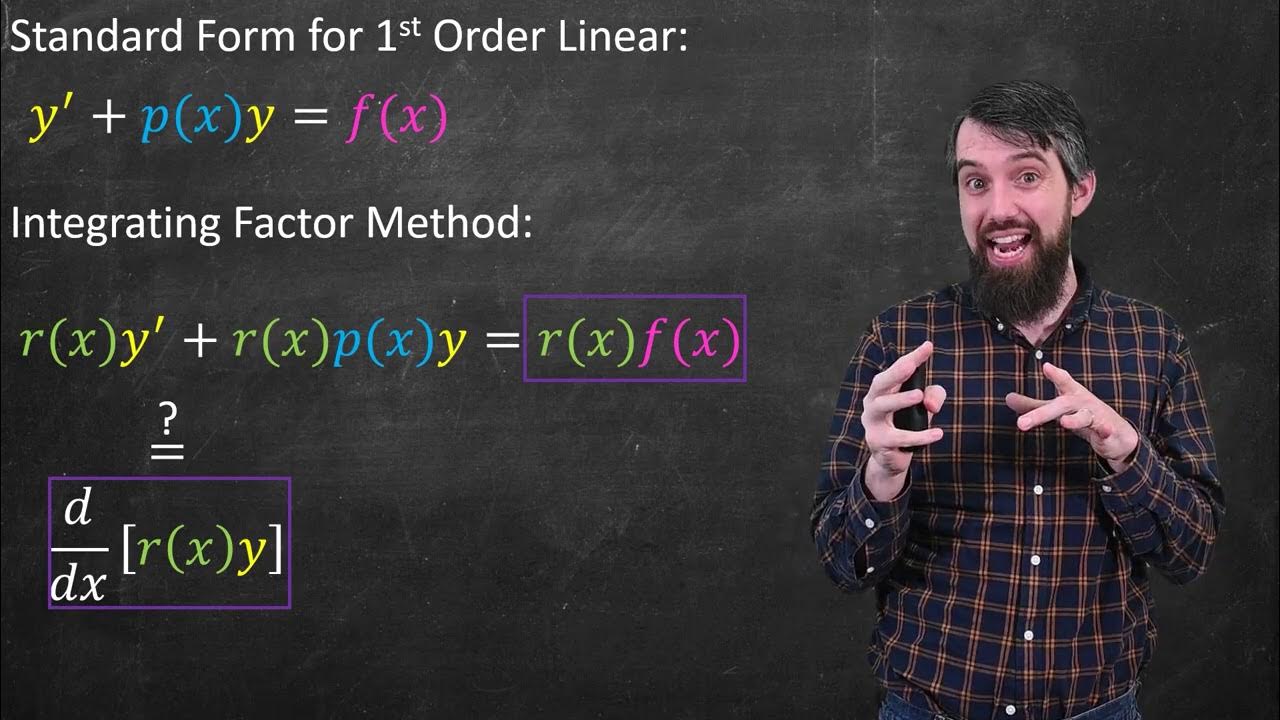SC. Explicitly Solvable SDEs: Motivation
TLDRThis video introduces the analytical solutions for certain stochastic differential equations (SDEs). While most SDEs require numerical solutions, exceptions like linear SDEs and geometric Brownian motion can be solved analytically. The video highlights two approaches: using specific tricks or a systematic method. The systematic method involves converting Ito SDEs to Stratonovich SDEs and applying ordinary differential equation (ODE) solving techniques. The key takeaway is that ODE solving recipes are applicable to Stratonovich SDEs, simplifying the analytical solution process.
Takeaways
- 📚 The video is part of a series introducing two types of stochastic differential equations (SDEs) that can be solved analytically.
- 🔍 The general theme is that most SDEs require numerical solutions, but there are exceptions that can be solved analytically.
- 📉 The video will cover linear SDEs and geometric Brownian motion, which induce Gaussian and local normal distributions, respectively.
- 📝 When using numerical schemes, it's important to evaluate integrals at the left endpoint of intervals, unlike analytical solutions which may use specific tricks or systematic approaches.
- 🔄 The systematic approach to solving SDEs involves rewriting Ito SDEs into Stratonovich SDEs and then applying well-known ODE solving techniques.
- 📈 Linear ODEs and separable ODEs are the most well-known applications for explicitly solvable ordinary differential equations, and similar methods apply to SDEs.
- 🔧 The solution method for linear and separable SDEs is the same as for their ODE counterparts, highlighting the systematic approach's effectiveness.
- 🔑 Memorizing specific tricks for each SDE is less effective than understanding the systematic approach, which involves transforming SDEs into a form solvable by standard calculus recipes.
- 📐 The video demonstrates how to rewrite an Ito SDE into a Stratonovich SDE, which is essential for deriving the conditional density and finding analytical solutions.
- 🌐 The dot notation in front of Brownian motion signifies the use of Stratonovich representation, with the evaluation point for discretization being the midpoint of the interval.
- 📌 For practical work, especially simulation tasks, Ito representation is preferred over Stratonovich, except when deriving the conditional density of the SDE.
- 📉 The difference between Ito and Stratonovich representations lies in the drift adjustment, which involves the product of the volatility and its first derivative, important for constant volatility cases.
Q & A
What is the main theme of the video series?
-The main theme of the video series is to introduce a few exceptions to the rule that stochastic differential equations (SDEs) cannot be solved analytically and typically require numerical solutions.
What are the two types of SDEs that can be solved analytically as discussed in the video?
-The two types of SDEs that can be solved analytically are the linear SDE and the geometric Brownian motion.
What is the general approach to solving SDEs analytically?
-The general approach to solving SDEs analytically involves rewriting the Ito SDE into its Stratonovich form and then applying well-known ordinary differential equation (ODE) solving recipes.
Why is it beneficial to use a systematic approach instead of memorizing tricks for each SDE?
-A systematic approach is beneficial because it reduces the need to memorize specific tricks for each SDE, allowing one to apply a single, consistent method that leverages the vast knowledge of ODE solving techniques.
Outlines
📚 Introduction to Analytically Solvable SDEs
This paragraph introduces the video series, focusing on stochastic differential equations (SDEs) that can be solved analytically, despite the general rule that they require numerical solutions. It sets the stage for the series by explaining the exceptions to the rule and the importance of understanding the big picture before delving into the mechanics. The video aims to provide perspective on linear SDEs and geometric Brownian motion, which induce Gaussian and local normal distributions, respectively. It also touches on the difference between numerical schemes and analytical solutions, emphasizing the advantage of a systematic approach over memorizing specific tricks for each SDE.
🔍 Systematic Approach to Solving SDEs
The second paragraph delves into the systematic approach to solving SDEs, starting with rewriting the Ito SDE into its Stratonovich form. It explains the process of solving SDEs using well-known ordinary differential equations (ODE) recipes, highlighting the linear and separable ODEs as the most common applications for solvable SDEs. The paragraph also discusses.
Mindmap
Keywords
💡Stochastic Differential Equations (SDEs)
💡Analytical Solution
💡Numerical Schemes
💡Linear SDE
💡Geometric Brownian Motion
💡Ito and Stratonovich Calculus
💡Strata Novik Adjustment
💡Conditional Density
💡Integrating Factor
💡Systematic Approach
💡Cookbook Recipes
Highlights
Introduction to a series of videos on stochastic differential equations (SDEs) that can be solved analytically.
General theme: Stochastic differential equations are typically solved numerically, with a few exceptions.
Focus on two exceptions: linear SDE and geometric Brownian motion, which have analytical solutions.
Linear SDE induces a Gaussian distribution, while geometric Brownian motion uses a local normal distribution.
Numerical schemes require integral evaluation at the left endpoint of an interval.
Analytical solutions involve either knowing specific tricks or using a systematic approach.
Advantage of the systematic approach: No need to memorize tricks, just apply calculus recipes.
All stochastic calculus recipes are applicable to SDEs.
Ito SDE can be rewritten into Stratonovich SDE and vice versa.
Systematic approach involves rewriting Ito SDE into Stratonovich form and solving using known ODE techniques.
Linear and separable ODEs have well-known applications for explicitly solvable equations.
Solution methods for linear and separable SDEs mirror those of their respective ODEs.
Memorizing tricks for SDEs indirectly transforms them into Stratonovich representation.
Systematic approach is preferred for its reliability and ease of application.
Demonstration of how to rewrite an Ito SDE as a Stratonovich SDE.
Transcripts
5.0 / 5 (0 votes)
Thanks for rating:





